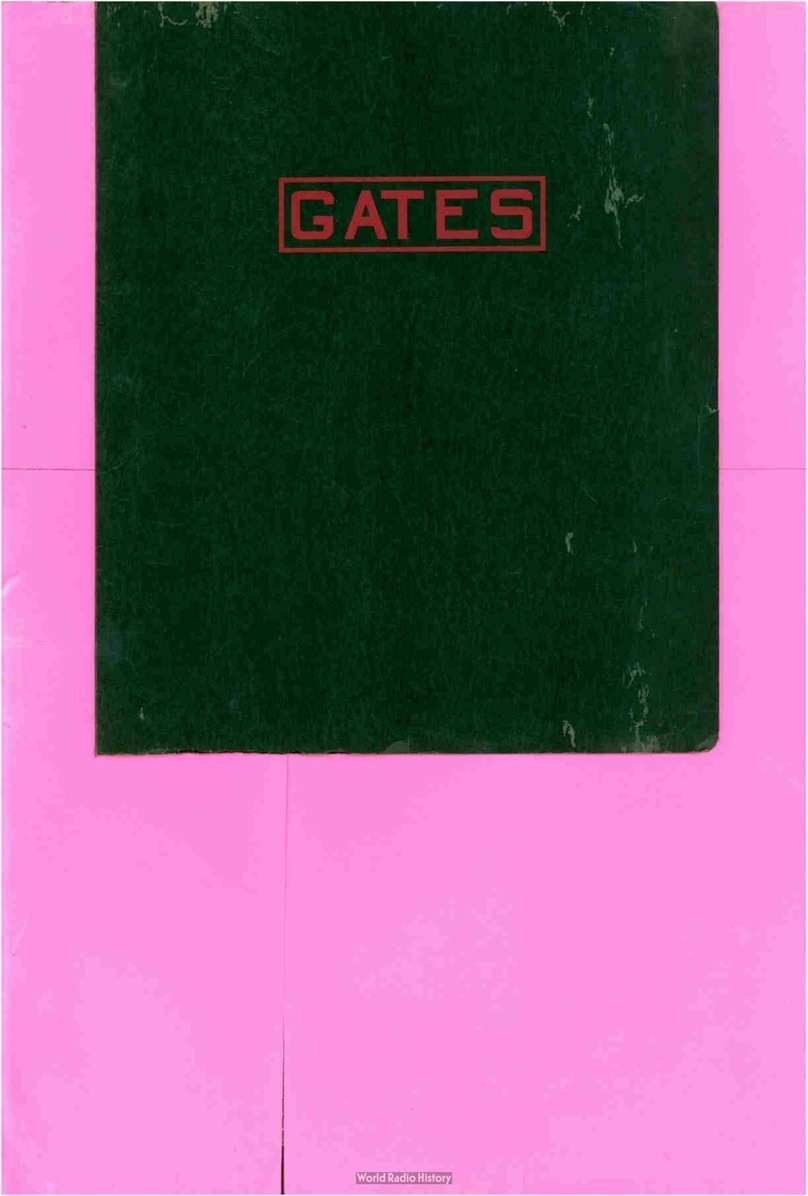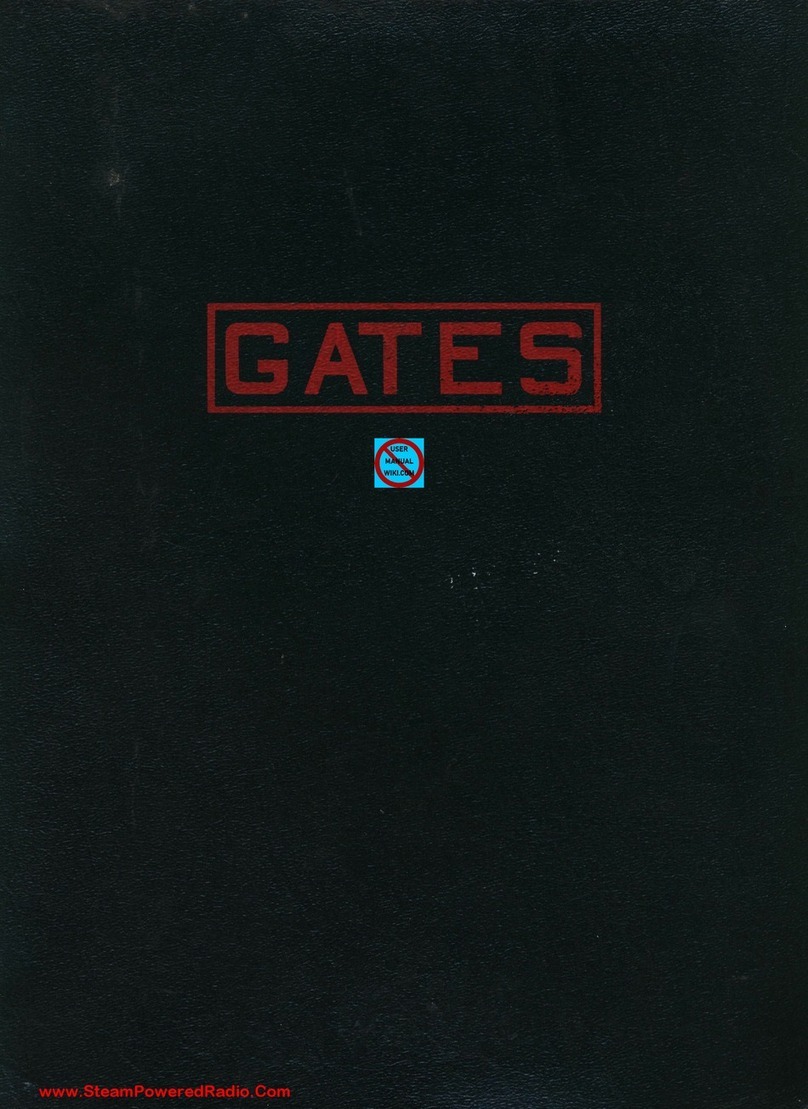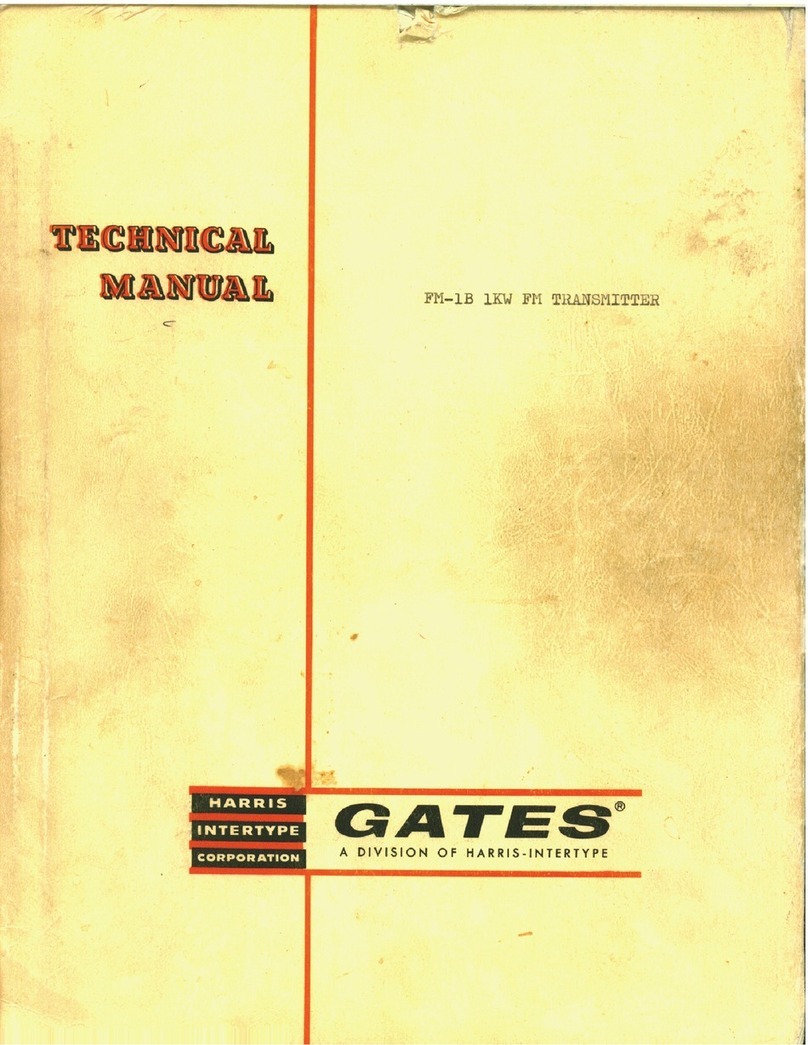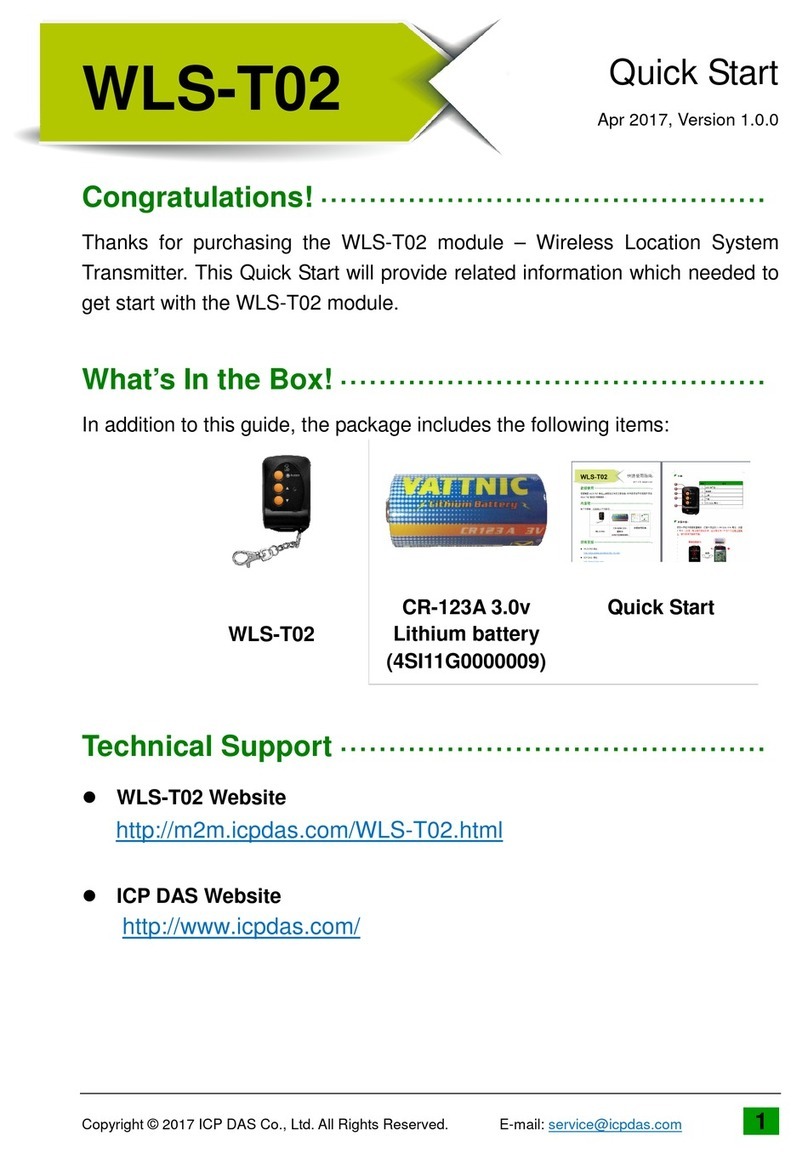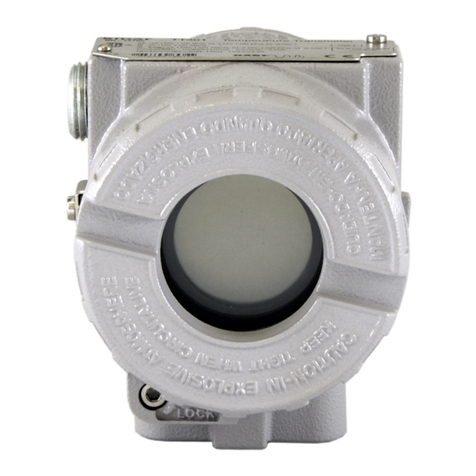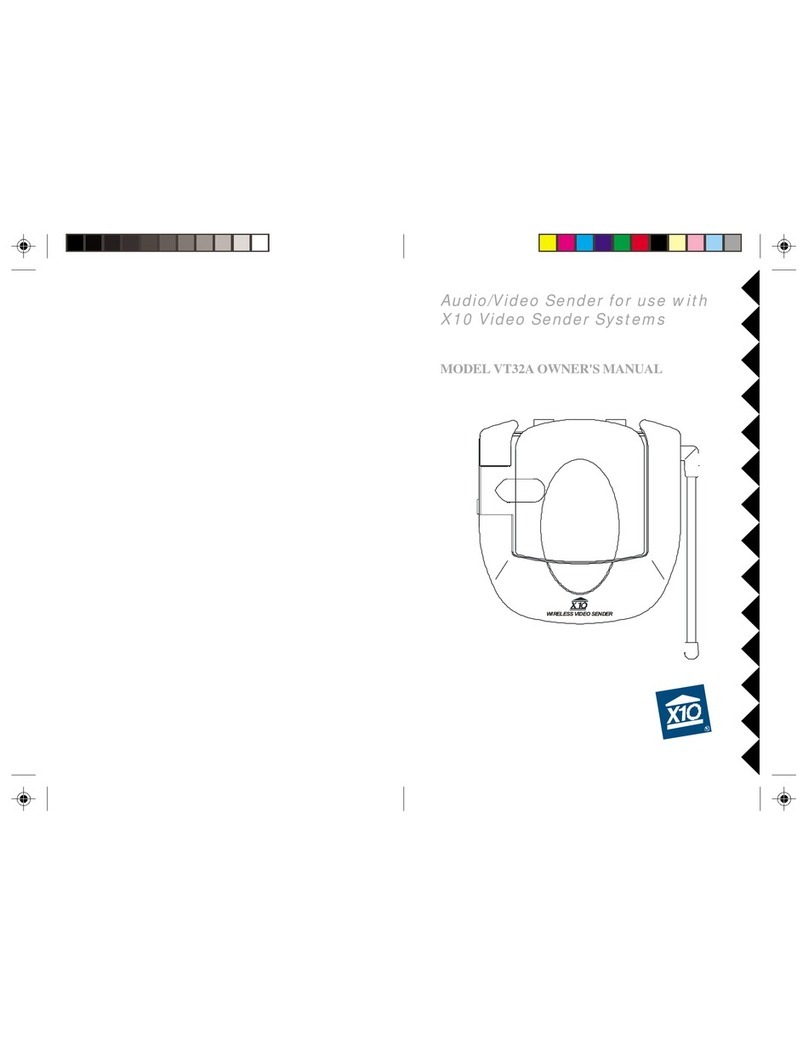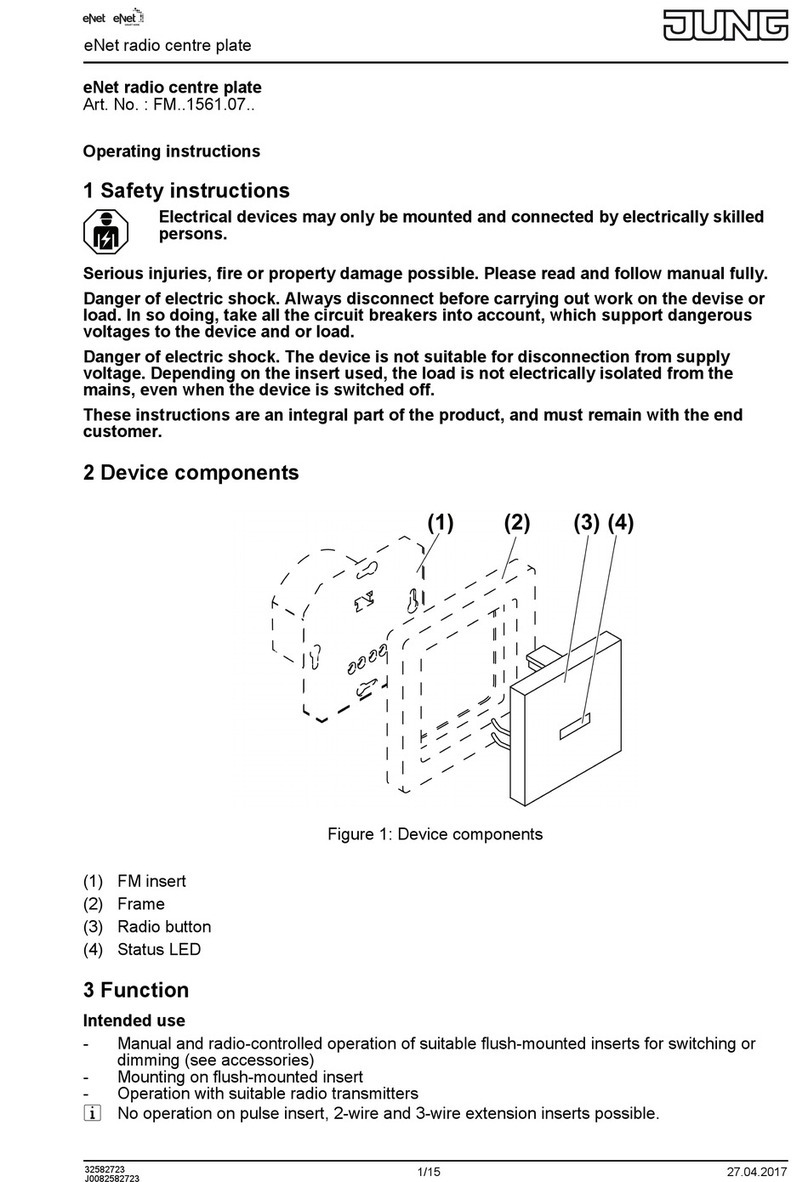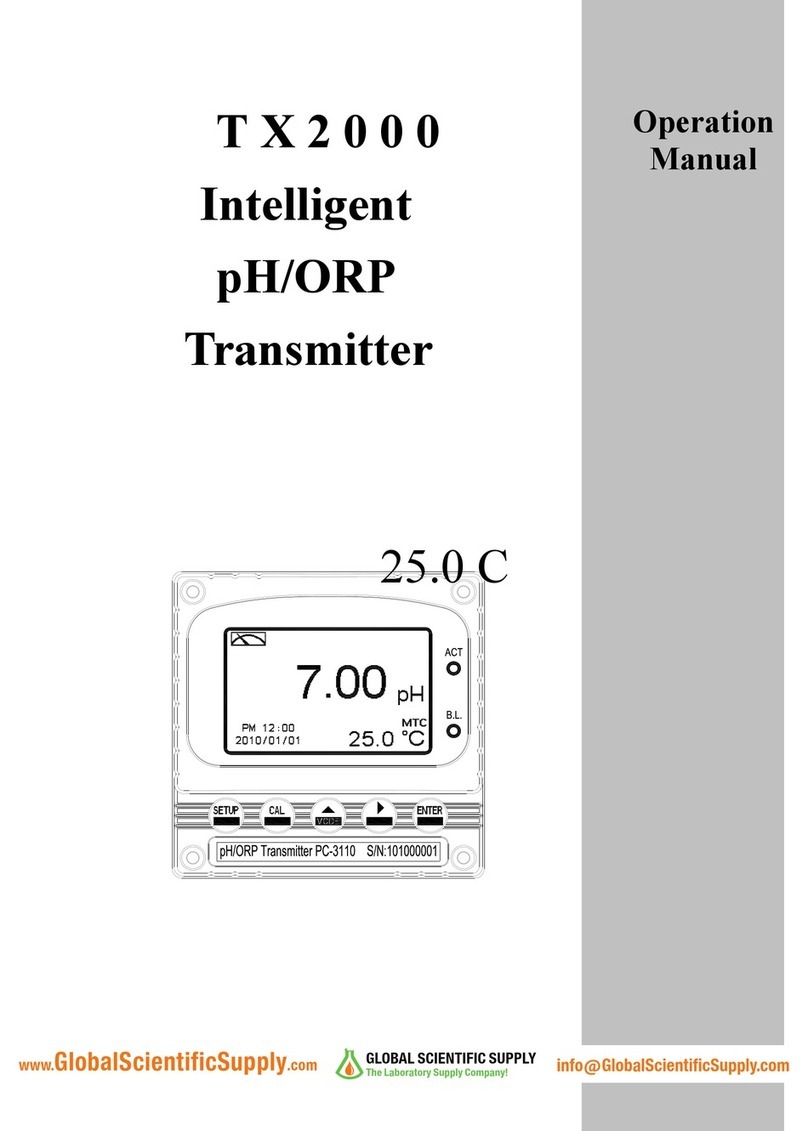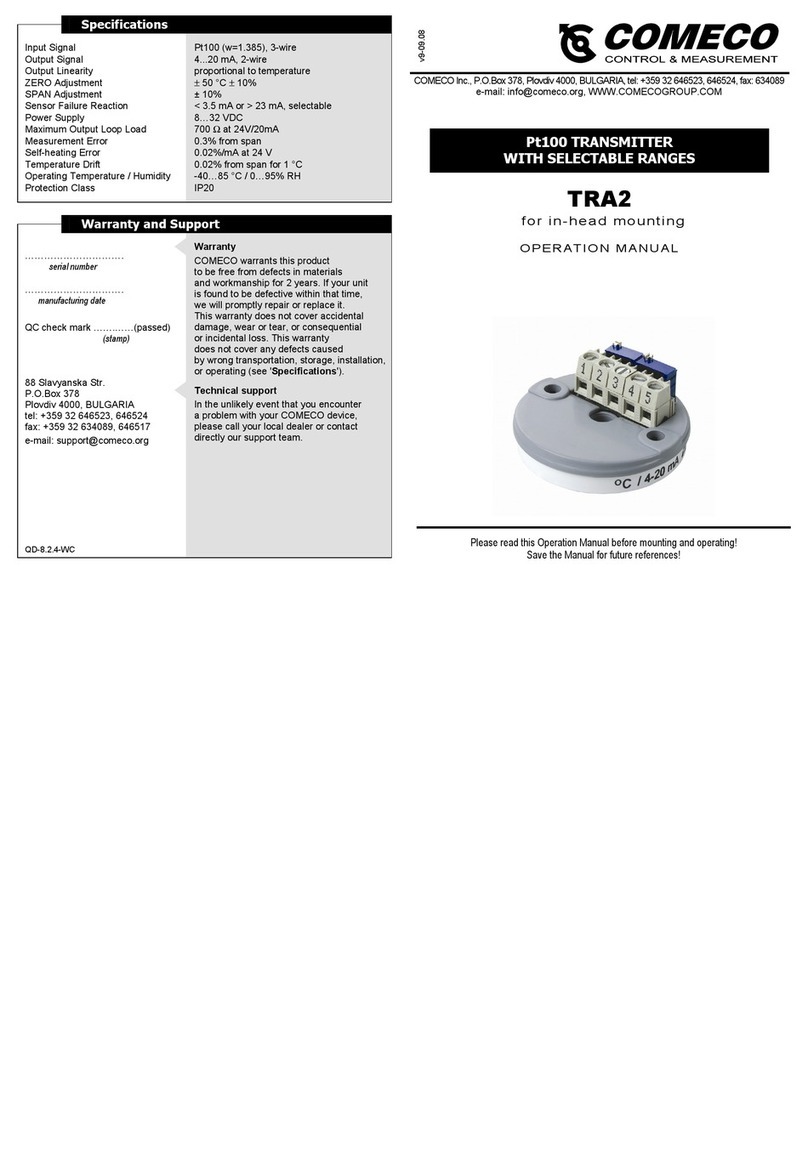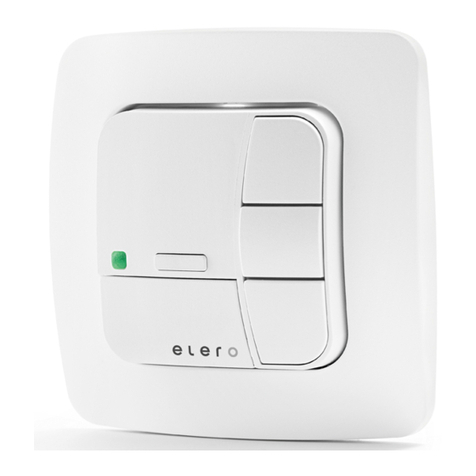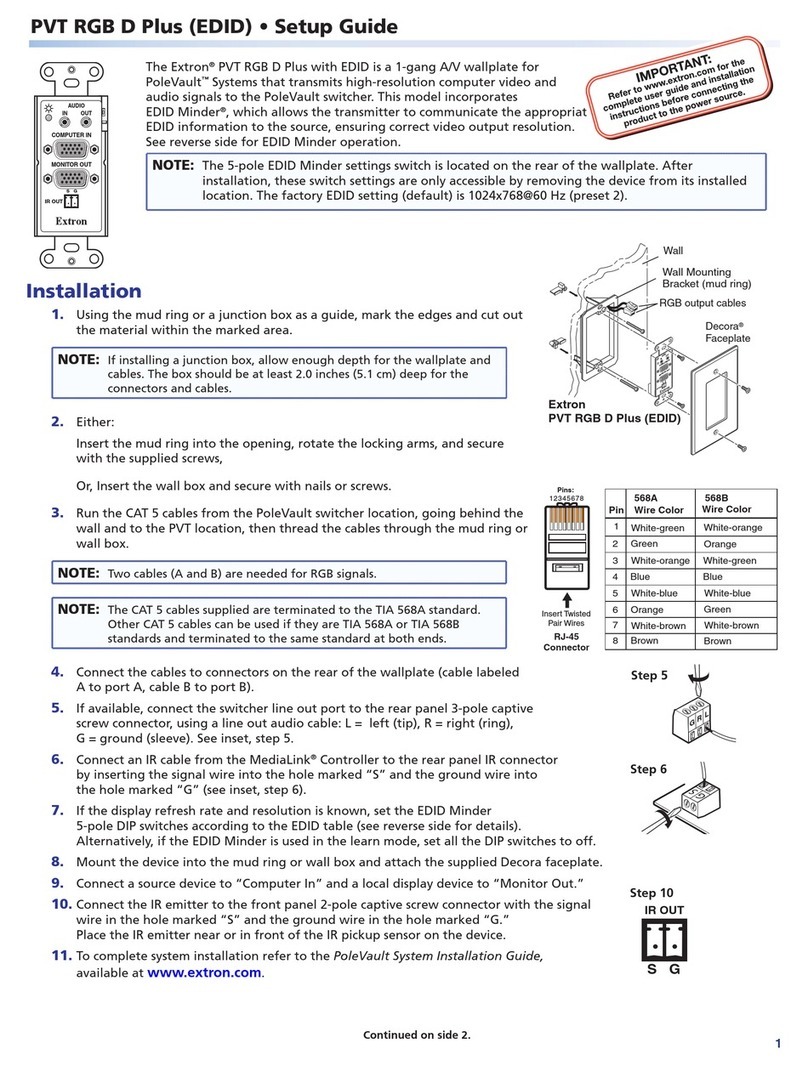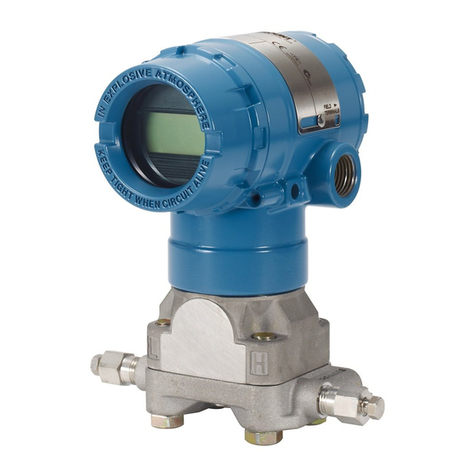Gates BC1G Instruction Manual

GATES

INURUCTIONS
FOR
InaLLING
AND
OPERATING
TH2
GATES
TYEE
BC1G,
1000/250
WATT
BROADCAST
TRAI\UIIITTER
Gates Radio
Company
I.B. #
888
0800
001
Quincy,
Illinois

MODULATION
TRANSFORMER
INSTRUCTIONS
Please
read
these
instructions
before
attempting
to
test
the
modulation
transformer
in
this
transmitter.
The
modulation
transformer
employed
in
this
transmitter
may
be
of
a
type
which
will
indicate
unequal
resistance
in
the
primary
windings.
An
ohmmeter
check
of
the
wind-
ings
may
indicate
that
the
transformer
is
defective;
whereas
in
reality,
this
is
a
normal
reading
and the
modulation
transformer
is
performing
normally.
In
order
to
properly
check
this
transformer
outside
of
the
transmitter
circuit,
merely
apply
117
volts,
60
cycle
a.c.
to
the
secondary
winding.
Check
the
voltage
on
each
half
of
the
primary
winding.
If
the
transformer
is
oper-
ating
normally,
then
these
voltages
s'r-viicl
be
approximately
equal.
Gates Radio
Company
Quincy,
Illinois

SAFETY
NOTICE
This
equipment
employs
voltages
which
are
dangerous
and .
may
prove
fatal
if
contacted
by
operating
personnel.
Extreme
caution
should
be
exercised
when
working
with
the
equipment.
KEEP
AWAY
FROH LIVE
CIRCUITS
Observe
safety
regulations.
Do
not
change
tubes
or
make
adjustments
inside
equipment
with
hiLh
voltages
on.
Do
not
depend on
door
interlocks
or
switches
for
protection.
No
reliance
should
be
placed
on
the
interlock
switches
for
removing
high
operating
voltages.
SWITCH
TO
SAFETY
SAFETY
FIRST:
.
1hen
workind
on
the
transmitter,
disconnect
the
primary
power
at
the
building
wall
switch.
WARRANTY
The
Gates
warranty,
gladly
supplied
in
detail
on
request,
generously
covers
all
materials
when
returned
to
the
Gates
factory
for
inspection,
transportation
paid.
Certain
moving
parts
and
tubes
are
guaranteed
usually
on
an
hourly
bnsis
and
that
of
the
manufacturer's
guarante.
This
warranty
does
not
extend
to
free
service
in
the
field,
but
this
service
is
wail-
able
at
a
modest
cost,
where
required.
BC1G

TABLE
OF
CONTENTS-
Pàe
SAFETY NOTICE
WARRANTY
TABLE
OF
CONTENTS
SPECIFICATIONS
ILLUSTRATION,
BC-
1G
FRONT
VIEW -
PHOTO
800
0437
001
SECTION
I -
GENERAL
DESCRIPTION
1.1
Mechanical
Construction
1.1.1
Transmitter
Controls
1.2
Incidental
Information
1.2.1
Tube
Handling
1.2.2
Transmitter
Building
Temperatures
1.2.3
Grounding
1.2.4
Antenna
Coupling
SFCTION
II -
THEORY
OF
OPERATION
2.1
M5422
Oscillator
Unit
2.1.1
Tube
Complement,
M5422
Oscillator
Unit
2.1.2
Type
of
Oscillator
Circuit
2.1.3
Type
of
Crystal
Used
2.1.4
First
IPA,
12BY7A
2.1.5
M5422
Oscillator
Tuning
Procedure
2.2
BC-
1G
Transmitter
Description
2.2.1 -
Tute.___Lineup
2.2.2
BC-
1G
llrfayrem
.-
1-t-t-
er
- -
CIr
cu
i:
t
ry
2.3
Power
Supplies
2.3e1
Bias
Supply
2.5.2
600/625
.
yolt,
Low
Voltage
Supply
2.3.3
2800
Volt
Supply
2.3.3.1
High Voltage
Supply
Operation
at
250
Watts
Output
2.3.3.2
BC-
1G
Power
Change
Facility
2.4
Attachment
of
Remote
Control
in
BC-
1G
SECTION
III -
INSTALLATION
3.1
3.2
3
.3
3.3.1
).3.2
3.3.3
3.3.4
3.3.5
3.3.6
3.3.7
Installation
Hints
Transmitter
Inspection
Transmitter
Connections
Primary
Power
Transmitter
Ground
Audio
Input
Modulation
Monitor
Frequency
Monitor
RF
Output
Remote
Control (
if
used)
-1-
BC-
1G

3.3.7.1
3.3.7.2
3.3.7.3
3.3.7.5
3.3.7.6
3.3.7.7
3.3.7.8
3.3.8
3.4
Detailed Instructions
for
Rerrate-Control
Connections
Plate
Rheostat
Motor
Assembly
'Remote
Power
Change
Reset,
Plate
Off
Remote.
Plate
Voltage
Indication
'Remote
Plate-
Current
Indication
Remote
Tower
Light
Indication
Remote
Antenna
Current
Metering
Studio
Procedure,
for
Remote
Control
Operation
Crystal
Installation
SECTION
IV -
TUNE-UP
PROCEDURE,
1000
WATT
CARRIER
4.
1
4.1.1
4.1.2
4.2
4.3
4.4
4.5
4.5.1
Preliminary
Tune-up
Checks
(Transmitter
locally
controlled)
Checking
Filament
Voltage,
Bias
Supply
and
Low
Voltage
Supply
Checking
Power
Amplifier
Tuning
Components
Neutralizing
the
Power
Amplifier
Power
Amplifier
Tuning
Modulator
Adjustment
Modulation
Monitor
Connections
Method
of
Adjustment,
Coil
L43
and
Resistor
R34
SECTION
V -
TUNE-UP
PROCEDURE,
250
WATTS
SECTION
VI -
HELPFUL
OPERATIONAL
INFORMATION
6.1
Frequency
Adjustment
6.
9
Transmitter
Cleanliness
6.3
Relay
Maintenance
6.4
Care
of
Printed
iring
Boards
6.5
Cabinet
Ventilating
Fan
6.6 -
Teet-quipment
revinsroeen
Esc
5.7
D.C.
Resistance-tle
-
a-ectrem
-
entallod•
AM-
30469E -
Gates
478 0084
000
6.8
Reprints
ary
a
Replacing
Components
on
the
Printed
Chassis. (
Gates
has
a
printed
sheet
furnished
on
request,
no
charge)
b)
HGlpful
General
Information
SECTION
VII - PARTS
LIST
SECTION
VIII -
TRANSMITTER
PHOTOGRAPHS
800
0437
002 -
800
0437
003 -
800
0437
004 -
800
0437
005 -
800 0437
006 -
800
0437
007 -
800 0437
008 -
800
0437
009 -
Front
Door
Open,
Screen
in
Place
Front
Door
Open,
Screen
removed
Front
Door
Open,
Screen
removed,
Panel &
Shelf
Inside
View,
Top Portion,
Transmitter
Inside
View,
Bottom
Portion,
Transmitter
Rear
View,
Back Removed,
showing
Rectifiers
Rear
View,
Back
Removed,
showing
Panel
&
Shelf
Side
View,
Side
Cover
Off
-2-
BC-
1G

SECTION
IX -
CIRCUIT
DIAGRAMS
AND
CHARTS
A-30584
Typical
Curves,
Frequency
Stability,
Vacuum
Crystal
821
3816
001
Schematic,
Oscillator
Unit,
M5422
813
7774
001
Typical Voltage
Chart
813
7711
001
Tuning
Chart
813
7626
001
Wiring
Diagram,
Modulator
Selector
Switch
813
7928
001
Supplemental
Relay
Connections,
KlA
813
7961
001
Supplemental
Relay
KlA
Location
813
7914
001
Wiring
Diagram,
Remote
Plate
Voltage
Control
837
8485
001
Wiring
Diagram,
Studio
Unit,
RDC-10C
837
9369
001
Wiring
Diagram,
Transmitter
Unit,
RDC-10C
826
9003
001
Interconnections
using
RDC-10C
Transmitter
Unit
813
7963
001
Running
Sheets,
Panel &
Shelf
813
7962
001
Running
Sheets,
Cabinet
826 8808
001
Control
Circuitry
813
7924
001
Base
Layout
813
7529
001
Diagram,
Primary
Relay
Kl
813
7628
001
Wiring
Diagram,
Multimeter
S2
Connections
813 8885
001
Contact
Identification
852
5878
001
Overall
Schematic
-3-
BC-
1G
Tranauitter

SPECIFICATIONS
BC-
1G,
1000/250 WATT
TRN.31`
,
IITTER
Talf,
FOLLOWING
SPECIFICA
.
2IONS
A.;
.E
TYPICAL -
RATED
POWER
OUTPU2:
1000/250
watts.
Capable
of
1100/275
watts,
if
necessary,
to
overcome
possible
losses
in
directional
arrays.
FREQUENCY
RANGE:
2000
Kc
to
540
Kc
PRIMARY
PUER
INPUT:
230
volts,
3
wire,
solid
neutral,
single
phase,
50
to
60
cycles.
Approximately
3850
watts
consumed
at
100%
tone
modu-J..-
tion,
at
1000
cycles.
FREQUENCY
STABILITY: +
5
cycles
within
temperature
range
of
-
50
to
122°F.
ELEVATION:
6500
feet.
VENTILATION
NECESSARY:
Provision
should
be
made
to
allow
1500
CPM
of clean,
outside
air
under
all
circumstances
AUDIO
INPUT:
INPUT
AUDIO
IMPEDANCE:
FREQUENCY
RESPONSE:
DI0TORTION:
CARRIER
SIM:
RF
OUTPUT
IMPEDANCE:
DUMMY
ANnNNA:
16
DB, +
2
7Y
1
k,
for
100%
modulation
for
both
output
powers.
As
supplied, 600
ohms,
w.ich
will
also
serve
to
match
500
ohms
satisfactorily.
Input
may
be
connected
for
150/250
ohms,
if
desired.
+1.5
DB,
30 to
12,000
cycles.
Rated
at
3%
from
50
to
10,000
cycles,
at
95%
modulation.
60
DB,
or
better,
below
100%
modulation.
37,
or
less,
between
0
and
100%
modulation.
Jill
match
resistive
loads
from
50 to
70
ohms.
51.5
ohms,
inbuilt
TUBES
USED:
2)
12BY7A,
Osc. &
let
IPA
6)
807,
Audio &
2nd IPA
4)
833A,
Power
Amp. &
Modulators
Silicon
rectifiers
are
used
in
bias,
intermediate voltage
and
high
voltage
supplies.


SECTION
I
GENERAL
DESCRIPTION
It
is
the
purpose
of
this
instruction
book
to
thoroughly
explain
in
a
clear,
concise
manner,
the
workings
of
the
Gates
BC-
1G
Broad-
cast
Transmitter,
as
well
as
installation
and
operational
infor-
mation.
The
pictures
show
clearly
all
components
within
the
cabinet,
these
parts
are
adequately
marked
for
easy
reference
back
to
the
parts
list
and
to
the
written
text.
This
instruction
book
is
a
manual
for
installational
information
and for
future
reference
during
servicing
of
the
transmitter.
1.1
MECHANICAL
CONSTRUCTION
The
BC-
1G
Transmitter
is
completely
self-contained
in
one
attrac-
tive
steel
cabinet,
measuring
78
n
high,
37°
wide
and
29"
deep,
with
a
full
front
door
with
its "
shadow
moulding'
covering
practi-
cally
the
complete
front.
This door
is
hinged
from
the
left
side,
it
requires
33"
floor
space
to
swing.
Four
large
meters
are
loca-
ted
on
a
panel
mounted
across
the
top
of
the
cabinet.
Most
of
the
controls
are
mounted
behind
and
hidden
by
this
door,
the
exception
being
the
filament
start/stop,
reset,
plate
off,
low
power
and
high
power
combination
switch
and
neon
indicators.
These
switches
are
mounted
on
the
right
hand
cabinet
corner
post,
protruding
through
an
opening
in
the
door,
when
it
is
closed.
The
heavy
power
components
are
mounted
on
the
base
of
the
cabinet.
The
low
powered
audio
and
radio
frequency
stages
are
built
upon
a
"panel
and
shelf"
assembly,
along
with
the
control
circuitry
and
the
bias
supply.
Mounted
on
the
shelf
portion
of
this
assembly
is
the
multi-
winding
filament
transformer
used
to
energize
all
tube
filaments
in
the
silicon
powered
transmitter. (
If
tube
rectifiers
are
used,
two
additional
rectifier
filament
trans-
formers
must
be
used).
At
the
top
of
this
panel
assembly
is
the
four
sets
of
filament
connectors
which
secure
the
P.A.
and
modulator
833A
tubes.
The two
tubes
to
the
front
of
the trans-
mitter,
V40
and
V41,
are
the
RF
amplifiers,
the
two
toward
the
rear,
V42 and
11
1
1.3,
are
the
modulators.
This
complete "
panel
and
shelf"
assembly
is
hinged
to
the
right
rear
cabinet
corner
post,
and
held
securely
by
three
captive,
slotted
head
screws
at
the
front
corner
post.
This
feature
allows
this
panel
to
be
loosened,
then
swung
inward
on
its
hinges,
to
provide
access
to
the
complete
panel without removing
the
right
hand
side
of
the
cabinet.
This
is
of
great
advantage
if
the
transmitter
is
located
in
a
position
necessitating
other
equip-
ment
to
be
placed
directly
against
the
right
hand
side
of
the
-transmitter.
All
tuning
controls
are
available
from
the
front
of
the
trans-
mitter. (
Large
front
cabinet
door
must,
of
course,
be
opened).
An
interlocked
perforated metal
screen
is
mounted
over
the
front
opening
of
the
transmitter,
which
gives
the
utmost
physical
pro-
tection
to
the
operating
personnel.
This
screen
is
easily
re-
movable
from
the
cabinet,
allowing
full
access
to
the
inside
of
-1-
BC-
1G

dUle
cabinet
from
the front.
One
exhaust
fan
is
located
above
the
833A
power
tubes,
in
the top
of
the
cabinet,
to
draw
the
heated
air
up
and
out
during
operatior...
Two
disposable
air
filters
are
located
in
the
lower
portion
of
the
back
cabinet
cover,
through
which
cool
air
is
drawn
into
the
transmitter.
The
dummy
antenna
asselnbly
is
mounted
on
the
left
cabinet
wall,
toward
the
top,
as
viewed
from
the
front.
Both
the
back
and
right
hand
side of
this
transmitter
cabinet
is
removable
for
servicing,
if
required.
1.1.1
TRANSMITTER
COUTROLS
All
transmitter
tuning
controls
are
available
from
the
front
of
the
transmitter.
The
small
vertical
panel,
which
is
an
integral
part
of
the " panel
and
shelf"
assembly
located
on
the
right
side
of
the
cabinet,
behind
the
front
door,
has
the
following
controls:
1.
The
crystal
selector
switch,
Sl,
and the
two
crystal
trimmer
capaoitors,
Cl
and
02. (
The
M5422
Crystal
Oscillator
Unit
is
mounted
directly
behind
this
panel.
Its
controls,
Sl,
Cl
and
02,
protrude
through
a
small
aperture
in
this
panel,
and
thus,
are
available
from
the
front).
2.
The
R2
driver
tank
tuning
ca
-
oacitor,
04.
3.
Multimeter
switch,
32,
4.
Modulator
cathode
current
selector
sitch,
Si.
5.
Modulator
bias
controls,
R1
and
R2.
The
following
controls
are
located
on
the
right
hand
corner
post
section
of
the
cabinet:
1.
Filament
rheostat,
R43.
2.
Plate
rheostat,
R41.
3,
Filament
On/Off,
341. (
Red pushbutton).
4.
Reset,
342. (
Red
pushbutton),
5.
i'late
stop,
343. (
White
pushbutton).
66
250
latt
carrier, $
44
6
(
Amber
pushbutton).
7.
1000 ',
Iatt
carrier,
345. (
lhite
pushbutton).
8.
Local/Remote
toggle
switch,
340.
-2-
BC-
1G

A
complemeet
of
four-
large
ineters-are_mounted
on -
a
panAl
at
-
the
top
of
the
cabinet.
From
left
to
right,
they
are:
1.
Multimeter,
M40
2.
Modulator
cathode
current,
M43.
3.
P.A.
plate
current,
M42.
4.
P.A.
plate
volts,
M41.
The
line
meter,
M44,
is
mounted
on
the
power
amplifier
panel,
and
is
visible
when
the
front
cabinet
door
is
open.
Also,
on
this
I.A.
panel
we
find
the
power amplifier
tuning
control,
L40,
the
power
amplifier
load
control,
L42,
and
the
neutralizing
adjustment,
C40.
This
latter facility
is
a
screw
driver
adjust-
ment
made
through
a
small
opening
in
the
panel,
it
is,
of
course,
a
seldom
manipulated
control.
1.2
INCIDENTAL
INFORMATION (
TUBE
HANDLING,
TRANSMITTER
MIDING
TEMPERATURE,
ETC.
It
is
well
to
mention
several
areas
that
make
for
better
and
more
profitable
operation.
1.2.1
TUBE
HANDLING
The
Gates BC-
1G
Transmitter
uses
833A
power
tubes
in
the
power
amplifier
and
modulator
stages.
_These_are
of
the
single
wire
or
thread
filament
type,
as
com-
pared
to
other
tubes
which _
may
have
the
filament (
heater)
con-
tained
in
a
tube,
which
is
commonly
called
the
cathode
assembly.
Tubes
having
single
wire,
or
thread
type
filaments,
supported
by
springs (
such
as
the 833A)
require
more
than
normal
care
in
handling.
These
filament
wires
are
easily
broken
by
sudden,
heavy
vibration.
At
all
times
handle
the
tubes
with
care,
until
they
are
safely
inserted
in
the
tube
sockets
of the
transmitter.
At
this
point,
more
care
must
be
exercised
in
this type
of
power
tube,
as
the
filament
prongs
are
also
the
means
by
which
the
tubes
are
secured.
Make
sure
the
filament
connections
have
some
"give"
so
that
no
undue
strain
is
placed
on
the
glass-
to-
metal
filament
prongs.
As
the
glass
envelope will
expand
a
bit
during
operation,
the
two
securing
filament
connectors
must
be
free
to
move
themselves.
Take
care
when
making
the
grid
and
plate
connections
to
the
tube,
do
not
put
any
undue
strain
on
these
connections during
tube
in-
stallation.
Of
course,
the
connections
to
the
grid
and
plate
should
be
flexible
to
allow
for
expansion
of
the
tube.
For
shipping
or
storing
it
is
advisable
to
use
the
packing
material
and
carton
that
the
tube was
shipped
in
from
the
tube
manufacturer.
Following
these
reasonable
precautions,
there
should
be
no
trouble
in
handling
these
tubes.
-3-
BC- 1G

1.2.2
TRANSMITTER
BUILDING
TiMPIATURES,
If
this
transmitter
is
to
be
unattended (
operated
by
remote
con-
trol)
care
should
be
taken
that
winter
temperatures
inside
the
transmitter
building
do
not
go
below
50°F.
Mercury
vapor
tubes.
(if
used)
will
arc
back
at
low
temperatures,
often
causing
severe
damage
either
to
themselves
or
other
expensive
components.
Pro-
tective
relays
and
fan
motors
may
also
become
sluggish
under
extremely
cold
conditions.
Failure
to
provide
adequate
winter
minimum
building
temperatures
will void
the
guarantee.
1.2.3
GROUYDriG
The
grounding
of
the
transmitter
installation
is
of
major
import-
ance.
Remember,
it
is
a
part
of
your
radiating
system.
It
can
be
safely
assumed
that
the
better
the
complete
ground
system,
the
more
efficient
will
be
the
radiating
system.
A
lack
of
complete
grounding
of
the
transmitting
and
audio
equipment
may
cause
trouble
from
stray
RF
getting
into
the
audio,
and
may
cause
unstable
trans-
mitter
performance,
etc.
It
is
wise
to
bond
all
electrical
con-
duit,
water
piping,
metal
building
framework
to
the
overall
ground
system.
If
these
suggestions
aie
followed,
there
will
be
less
trouble
over
the
years,
as
the
ground
system
ages.
1.2.4
ANT_NNA
COUPLING
Antenna
coupling
equipment
not
involved
in
these
instructions
is
a
very
important
part
of
the
entire
successful
operation.
The
instructions
supplied
with
the
antenna coupler will
aid
in
its
adjustment.
As
all
radiating
towers
must
be
measure&
electric-
ally
by
an
approved -
engineer,
he
could
check
and
advise
on
the
tune-up
of
the
antenna
coupler.
If
your operation
is
directional
the
engineer
will,
of
course,
tune
the
entire
directional
system,
which
includes
the
antenna
coupling
equipment.

SECTION
II
THEORY
OF
OPERATIE
This
section
of
the
instruction
book
will
include
the
theory
of
operation
of
the
M5422
Oscillator
Unit
when
combined
as
an
in-
tegral
part
of
this
1000/250
watt
Transmitter.
A
general
des-
cription
of
the
complete,
overall
transmitter
operation
will
be
given.
2.1
M5422
OSCILLA
.
20à
UNIT
This
oscillator
unit
physically
is
inches
wide,
including
mounting
flanges,
6
inches
high,
and
6g
inches
deep,
including
connector
plug.
The
unit
is
mounted
by
means
of
its
flanged
bottom
on
the
aluminum
vertical
portion
of
the °
panel
and
shelf",
Its
controls
extend
out
through
a
cutout
in the
front
vertical
panel.
The
oscillator
shield
cover
held
in
place
by one
thumb
screw,
can
be
re,.loved
by
unfastening
and
sliding
horizontally
away
from
the
oscillator
chassis.
Connections
to
the
M5422
oscillator
unit
are
made
by
a 8
position
female
plug,
Pl,
at
the
rear.
2.1.1
TUBE
COMPL2hENT
OP
TH2
M5422
OSCILLATOR
UNIT
This
oscillator
unit
uses
a
12BY7A
oscillator
tube,
V1,
driving
another
12BY7A,
V2,
the
first
IPA.
2.1.2
TYPE
OF
OSCILLit20.'i
CIRCUIT
The
12BY7A
oscillator
tube
operates
in
a
crystal
controlled
grid
plate
circuit,
also
often
referred
to
as
a
grounded
plate Colpitts
circuit.
Excitation
is
controlled
by
the
proper
ratio
of
tl/é
two
capacitor
values
of
C3
and
04.
2.1.3
TYPE
OP
CRYSTAL
UD
This
oscillator
unit
has
facilities
for
two
vadulim
and
glass
enclosed
crystal
assemblies,
each
crystal
car{be
selected
for
use
by
means
of
the
rotary
switch,
Si. (
One
crystal
is
needed
for
operation,
the
second, if used,
would
be
a
spare).
These
crystals
are
mounted
in
octal
based,
glass
envelopes
which
have
been
pumped
to
a
high
vacuum.
These
plug
into
octal
sockets
in
the
oscillator
unit.
The
crystals
are
of
the
low
temperature
co-
efficient
type,
there
is
no
need
for
crystal
heater
ovens
for
normal
operation.
Frequency
trimmer
capacitors,
Cl
and
02,
are
tunable
from
the
front -
these
capacitors
are
connected
in
shunt
with
the
crystals
and afford
a
slight
frequency
adjustment
which
can
be
used
during
initial
tune-up.
Also,
ageing
of
the
crjstals
could
cause
a
slight
frequency
change
during
day
to
day
operation.
This
change
can
be
compensated
for
by
re-
adjustment
of
these
capacitors.
-5-
BC- 1G

2.1,4
12BY7A
FIRST
IPA
This
tuned
first
IPA stage
is
lightly
capacitively
coupled
to
the
oscillator.
Its
output
circuit
L3
and
09,
is
used
on
frequencies
from
1600
Kc
to
800
Kc;
from
800
Kc
to
540
Kc
a
padder
capacitor,
Cll,
100
mmfd.
mica
is
connected
in
parallel
with
capacitor,
C9,
The
output
of
this
stage
is
capacitively
coupled
to
the
grid
cir-
cuit
of the
two
807
second
IPA
tubes,
through
C10
in
the
oscilla-
tor
unit
and
C8
in
the
807
stage.
Adequate
drive
of
from
2
to
5
ma.,
depending
upon
operating
frequency
is
provided
for
the
two
807's.
Approximately
180
to
210
volts
DC
is
applied
to
the
oscil-
lator
unit,
being
supplied
by
the
625
volt
power
supply
through
dropping
resistor,
R5.
Drive
voltage
for
operation
of
a
Frequency
Monitor,
such
as
the
Gates
114990,
is
provided.
The
monitor
drive
output
is
obtained
from
the
plate
circuit
of
the
1st
IPA
stage.
A
small
coupling
capacitor,
012,
is
used.
2.1.5
M5422
OSCILLATOR
TUNING ±
ROCEDURE
The
following
tuning
instructions
should
be
followed
when
placing
the
M5422
oscillator
in operation.
If
this
procedure
is
not
followed,
it
is
possible
to
tune
the
oscillator
to
the
second
harmonic
of
the
crystal
rather
than
the
fundamental.
Information
that
follows
was
obtained
with
the
M5422
oscillator
connected
to
its
proper
UP
load and
30
feet
of
RG62/U
cable
con-
nected
to
the
monitor
terminal
6
with
shield
to
ground,
or
terminal
P.
RG62/U
cable
runs
13.5
mmfd.
per
foot,
or
a
total
of
approximately
400
mmfd.
effective
capacity
on
the
30
foot
lengths.
Shorter
lengths
of
cable
on
frequencies
above
600
Kc
will
effect
the
tuning
of
the
unit.
More
tuning
capacity (
09)
or
more
turns
of
the
slug
in
L3
may
be
required
for
resonance.
Shorter
lengths
of
monitor
cable
on
frequencies
from
600
Kc
to
540
Kc
may
prevent
the
unit from
tuning
to
resonance.
If
this
is
the
case,
capacity should
be
added
across
the
cable
to
make
up
the
difference
in
effective
capacity.
Longer
lengths
of
cable
would
mean
less
capacity
or
less
inductance
needed
for
resonance
in this
frequency
range.
It
is
recomended
tnat
the
proper
length
of
RG62/U
be
used
whenever
possible.
Frequencies
from
1600
Kc
to
800
Kc
1.
NO
.
ADDING
needed
in
this
frequency
range,'
2.
Make
sure
that
slug
of
L3 is
screwed
all
the
way
out.
From
1600
Kc to
approximately
1100
Kc,
tune
09
for
dip
in
plate
curr
nt
or
peak
in
grid
current
of
following
stage.
If
C9
does
not
tune
through
resonance,
screw
in slug
on
L3
a
turn
at
a
time,
until
resonance
is
obtained
with
C9.
800
Mc
is
tuned
with
09
near
maximum
capacity
and
slug
of
L3
screwed
in
7
turns.
-6- BC-
1G

If
above
procedure
is
not
followed,
it
will
be
posatble
for
crystals
from
approximately
900
hO
to
800
4Qtia---turie
to
their
second
harmonic,
if
slug
in
L3
has
not
-
been
screwed
dawn
to'
approximately
7
turns
for
800
Kc.
Frequencies
from
540
Kc to
800
Kc
1.
The
padder
capacitor
Cil,
100
mmfd.
located
on
bottom
of
L3
must
be
connected
in
the
circuit.
2.
The
slug
of
L3
should
be
screwed
down 14
turns.
Frequencies
from
540
Kc
to
approximately
600
Kc
can
be
resonated
with
capacitor
09.
If
complete
resonance
cannot
be
obtained
on
09,
screw
the
slug
of
L3
back
out
a
turn
at
a
time
until
reso-
nance
is
obtained
by
turning
09.
At
800
Zc
resonance
will
be
with
09
near
minimum
capacity
and
the
slug
of
L3
screwed
out
approximately
7
turns
from
the
starting
point,
14
turns
down.
CAUTION
-
If
above
procedure
is
not
followed
and
padder
not
connected,
it
will
be
possible
to
tune
crystals
from
540
Kc
to
800
Kc to
their
second
harmonic.
!‘fter
resonance
has
been
obtained, the
crystal
may
be
set
to
oxact
frequency
by
using
the
frequency
monitor.
Set
the
slots
of
the
trimmer
capacitors,
Cl
and
02,
located
on the
front
of
the
unit,
at
right
an
G
les
to
the
plane
of the
trimmer
mounting
screws.
qith
the
crystal
selector
switch
turned
to
W1
crystal,
the
frequency
should
be
very
close
to
zero;
if
not,
adjust
the
trimmer
FREQ.
j1
until
frequency
is
zero
or
to
point
desired
for
operation.
Turn
crystal
selector
switch
to
2
position
and
re-
peat
above.aperation
with
trimmer
FREQ.
7,2.
The
tuning
of
these
condensers
will
not
effect
tile
resonate
tuning
of
the
unit
and
capacitor
09
will
have
very
little,
if
any,
effect
on
the
trimmer
adjustments.
2.2
BC-
1G
TRANSMITTR
DEJCRIPTION
The
following
information
will
briefly
describe
this
transmitter,
giving
tube
line-up
and
circuitry
of
the
audio
and
RP
sections
along
with
the
various
power
supplies
used.
2.2.1
TUBE
LINE-UP
As
mentioned
previously
the
M5422 Oscillator
Unit
uses
a
12BY7A
oscillator
and
a
12BY7A
first
IPA.
This
stage
drives
a
pair
of
807's
second
IPA,
which
in
turn
supplies
tile
driving
power
for
a
pair
of
833A
tubes
operating
in
parallel
as
the
modulated
Class "
C"
power
amplifier.
The
audio
system uses
a
pair
of
push-pull
807's.
as
the
audio
input
amplifier,
these
driving
another
pair
of
807's
operating
as
a
cathode
follower
stage
which
in
turn
drives
the
two
Class "
B"
833A
modulator
tubes,
these
tubes
in
turn
high-level
plate
modu-
late
the
833A's
in
the
2,i7
power
aniplifier.
-7-
BC-
1G

The
bias
supply
-
uses
si
1
trcm
-
rectifiers.
The
intermediate
voltage
supply
makes
use
of
silicon
rectifiers
in-
a-
full-
wave
center
tapped
configuration.
Silicon
units
are
used
in
the
high
voltage,
full-
wave
center
tapped
rectifier.
2.2.2
BC-
1G
TRAN,JMITTER
CIRCUITRY
The
BC- 1G
transmitter
uses
the
M5422
oscillator
unit
to
drive
the
two
807's
operating
in
parallel
as
the
RF
driver
stage.--
This
stage
operates
with
approximately
600/625
volts
on
the
plate
of
the tubes,
400
volts
on
the
screens,
and
60
to
65
volts
negative
on the
grids.
Forty-five (
45)
volts
of
this bias
is
fixed,
being
supplied
from
the small
bias
power
supply,
this
voltage
is
suffi-
cient
to
limit
the
plate
dissipation
to
an
allowable
value
in
the
event
that
grid
excitation
is
lost.
In
normal
operation,
the
cathode
current
of
this
807
RF
driver
stage
will
run
from
150
to
200
ma
total
for
-
both
tubes,
varyng
so7levihat
with
operating
fre-
quency
and
loading.
This
current
is
indicated
on
the
multimeter
when
the
multimeter
switch
is
set
in
the
° RF
Driver
Cath."
posi-
tion.
With
this
same
selector
switch
set
in
the
"
RF
Driver
Grid"
position,
grid
current
to
the
807
ill'
driver
stage
will
be
indi-
cated.
This
will
be
on
the
order
of
2
to
5
mils.
The
plate
and
screen
voltages
of
the
807
RF
driver
are
modulated
slightly, this
feature
tends
to
increase
the
UF
drive
to
the
modu-
lated power
amplifier
on
peaks
of
the
modulation
cycle,
this
improves
the
distortion
figure
of
the
transmitter.
The
RF
driver
stage
is
capacitively
tuned
by
the
250
imfd.
vari-
able
capacity,
04.
Below
1150
Kc
a
padding
capacitor
must
be
connected
in
parallel
with
C4.
The
power
amplifier
of
the
transmitter uses
two
833A
tubes
con-
nected
in
parallel.
The
output
circuit
of
this
PA
stage
can
be
said
to
be
made
up of
an "
L.'
and
two
itTn
networks,
which
effec-
tively
transform
the
operating
tube
impedance
down
to
the
50/70
ohms
found
at
the
line
terminal
of
the
transmitter.
This
network
also
does
a
commendable.
job
in
reducing
to
a
minimum
the
trans-
mission
of
harmonics
which
might
be
generated
in
the
transmitter.
Power
amplifier
coils
140 and
142 are
of
the
continuously
variable
type
and
are
used
to
tune
the
power
amplifier
to
resonance,
in the
case
of
1,40,
and
to
vary
the
loading
by
means
of
L42.
Other
than
the
neutralizing
capacitor
040,
there
are
no
variable
air
dielec-
tric
capacitors
used
in
the
power
amplifier
of
this transmitter.
This
adds
greatly
to
its
Grid
drive
to
the
amplifier
should
be at
least
100
ma.
for
good
operation.
This
will
be
indicated
by
the
multimeter
when
the
multimeter
selector
switch
is
in
the "
Power
Amp.
Grid"
position.
Higher grid
drive
up
to
150
ma. is
acceptable,
but
this
drive
will
vary
slightly,
depending
upon
the
transmitter
frequency.
-8-
BC-
1G

The-tranmitter
-
wfll
match
50/70-chm-nhyl
need
loads,
delivering
full
power
ou
-
4ut
with
power
amplifier
plate
efficiency
of
70»
or
better.
Other
load
impedances
are
available
on
special
order.
Audio
wise,
the
Gates
BC- 1G
transmitter
is
novel
in
many
respects.
The
audio
input/audio
driver
assembly
is
made
up
basically
of
components
mounted
on
a
printed
wiring
board.
Tais
assembly
is
.
located
on
the
panel
and shelf
section
of
the
transmitter
and in-
cludes
the
two 807
audio
input
tubes,
the
two 807
cathode
follower
audio
driver
tubes,
along
with
the
balance
coatrol,
113,
condensers
and
resistors
for
these
two
stages.
The
audio system
is
push-
pull
in
operation
for
all
stages.
The
cathode
follower
audio
driver
tubes,
V3
and
V4,
are
biased
by
voltage
controlled
by
tàe
potentiometers,
R2
and
R1,
located
on
the
small
aluminum
front
panel.
These
controls
indirectly
adjust
the
operating
bias
on
the
modulators
by
varying
the
operating
constants
of
the
cathode
followers,
this
causes
a
bias
voltage
change
on
the
modulators
by
having
a
voltage
drop
occur
across
the
high
resistance
cathode
resistors,
1111
and
1112,
of
the
cathode
followers.
A
very
smooth
modulator
bias
change
can
be
attained
in
this
manner,
making
it
possible
to
adjust
the
modulators
for
correct
operating
conditions.
There
is
no
metering
of
the
plate
current
of
the
807
cathode
followers,
V3
and
V4,
it
is
believed
that
if
proper
modulator
operation
is
had,
then
the
807
cathode
followers
are
operating
satisfactorily.
High
level
Class "
B"
modulation
is
used
in
the BC-
1G,
a
pair
of
833A
tubes
providing
the
means. The
grids
of
the
modulators
are
excited
by
the two
807
cathode
follower
audio
driver.
The
output
of the
modulators
is
coupled
to
the
Class °
C"
amplifier
by
means
of
the
capacitor
045,
and
the
reactor
L47.
The
secondary
of
the
modulation
transformer
T41
does
not
curry
any
power
amplifier
DC.
Feedback
from
the plates
of the
modulators
back
to
the
audio input
tube
grids
has
been
provided.
A
small
feedback
ladder
printed
wiring
board
is
located
on
the
panel
and
shelf
assembly
direct1y
above
the
modulation
transformer,
T41.
By
means
of
a
resistor/
capacitor
divider
network
out-
of-
phase
voltage
is
fed
back
to
the
audio
input.
The
transmitter
makes
use
of
approximately
12
to
14
DB
of
feedback
measured
at
1000
cycles
and 90%
modulation.
This
feedback
helps
to
reduce
the
noise
and
also
improves
tae
distortion
figures.
The
power
amplifier
and
the
modulator
plate
circuits
are
protected
against
abnormally
high
overload
currents
by
means
of
relays,
K6
and
K7.
These
are
located
on
the
top
shelf
of
the "
panel
and
shelf"
assembly,
adjacent
to
the
multi-
winding
filament
trans-
former,
T3.
The
overload
relays,
K6
and
K7,
have
their
coils
shunted
by 20
ohm semi-
variable
resistors.
By
adjustment
of
the
slider
tap.,
the
relay pull-
in
point
can
be
selected.
These
resistors
have
been
set
at
the
factory
for
normal
operation.
K6,
the
modulator
overload
will
pull
in
at
a
modulator
total
-
plate
current
of
approximately
600
Ma. (
Normal
plate
current
for
voice
and
music
programming,
hitting
100
will
be
around
400
ma
total).
-9-
BC-
1G

PA
overload
K7
is
set
for
approximately
700
1.1a
pull-
in (
normal
PA
plate
current
will
range
from
525
to
600
1,
1a,
dependin
g
on
PA
transmitter .efficiency).
These
relays
may
pull-in-prmatave
during
sine
wave
audio
modulation
at
the
100»
level.
In
this
event
the
adjustments
can
be
made
to
allow
for
this
type
of
operation.
If
the
current
in
either
circuit
exceeds
the
value for
which
its
relay
was
set,
the
relay
will
energize,
causing
its
normally
closed
contacts
to
open,
which
in
turn
opens
the
coil circuit
of
auxiliary
relay,
K9.
This
causes
the
contacts
of
relay
K9
to.
eat-
urn
to
their
normally
open
position;
thus,
opening
the
coil
circuit
of
the
high
or
low
power
contactor (
whichever
had
been
in
use),
this
reoves
primary
voltage
from
240,
the
high
voltage
power
transformer.
2.3
POWER
3UPPIinS
The
Gates
BC-
1G,
1000/250
watt,
Transmitter
makes
use
of
three
separate
power
supplies.
These
use
full
wave,
C.T.
rectifier
and
filter
assemblies.
Each
of
the
three
silicon
supplies used
in
the
transmitter
will
be
fully
described
in
the
following
paragraphs.
2.3.1
BL'5
JUPPLY
This
supply
is
made
up
of
a
plate
transformer,
Ti,
working
in
conjunction
with
the
bias
rectifier,
a
silicon
rectifier
consist-
ing
of
10
diodes,
400
volts,
PDT,
filter
choke
Li,
filter
capaci-
tor,
C3,
and
associated
resistors
and
potentiometers.
The
bias
potentiometers,
R1
and
112,
indirectly
vary
the
modulator
bias
by
controlling
the
cathode
follower
bias
and,
thus,
the
current
flow
through
the
cathode
follower
resistors,
Rll
and
2.12.
There
is
applied
a
negative
280
volts
between
these
resistors
and
ground.
An
opposing
voltage
of
approximately
210
volts
is
developed
by
current
flow
through
Rll
and
1112;
thus,
putting
the
difference
(about
60 to
70
volts)
on
the
grifa3
of
the
modulators.
This
bias
supply
also supplies
45
volts
of
fixed
bias
to
the
two 807's
in
the
RF
driver
stage. "
This
voltage
is
obtained
by
a
tap
on
bias
resistor,
R12.
This
bias
supply
is
energized
at
tue
time
that
the
filament
start
button,
41,
is
depressed.
2.3.2
600/625
VOLT
LOI
VOL2,GE :
3UPILY
This
supply
uses
14
diode
units
of
600
volt
PIV
rating
working
as
a
full
wave
C.2.
rectifier,
with
a
choke
input
filter
system.
Choke
1,46
is
rated
at
10
hy.,
capacitor
C47
is
a
10
mfd
unit.
This
supply
develops
aparoximaely
600/625
volts
which
is
applied
to
the
two 807
HF
driver
tubes.
The
same
voltage
is
dropped
to
around
575
volts
through
series
resistor,
114,
and
applied
to
the
two
audio
stages.
The
115422
oscillator
unit
derives
its
plate
potential
from
this
same
power
supply,
the
voltage
being
dropped
to
approximately
195
volts
by
means
of
series
resistor,
R5.
This
supply
has
a
time
delay
relay,
K8,
connected
in
its
primary,
which
delays
the
application
of
this
low
voltage
for
approximately
10
seconds
after
the
filament
voltage
has
been
applied.
This
-10-
BC-
1G

supply
also has
its
primary in
series
-
with
door
interlock
-
switches
346 -
and
348.
If
either
the
front
protective
screen
or
the
buck
cabinet
cover
is
not
securely
in
place
this
supply
will
be
in-
operative.
2.3.3
2800
VOLT
3-
UPPLY
High
voltage
for
the
power
amplifier
and
modulator
is
developed
by
two
silicon
rectifier
assemblies,
each
consisting
of
30
diode
units
of
600
volt
PIV
rating,
working
as
a
full
wave
C.T.
recti-
fier.
This
supply
is
capable
of
delivering
slightly
over
one
ampere
DC.
The
main
power
transformer,
T40,
the
filter
choke,
L45,
and
filter
capacitor,
048,
are
located
in
the
bottom
section
of
the
transmitter
cabinet.
This
high
voltage
supply
is
inter-
locked
with
the
front
panel
grill
and
the
interlock
switch,
347.
As
mentioned
previously,
this
transmitter
has
a
metal
grill
work
covering
the
front of
the
unit,
this
protects
the
operating
per-
sonnel
from
the
dangerous
high
voltages
which
are
present
inside
the
transmitter
cabinet.
The
lower
edge
of
the
protective
grill
is
secured
by
two
quick
operating
ON/OFF
fasteners.
when
this
grill
is
in
place,
its
lower
edge
operates
the
safety
door
inter-
lock
switches,
S46
and
347.
2.3.3.1
HIGH
VOLTAGE
SUPPLY
OPERATION
AT
250
UTT3
OUTPUT
The
BC-
1G
1000/250
watt
Transmitter
can
operate
at
250
watts,
this
is
made
possible
by
reducing
the
primary
voltage
applied
to
the
high
voltage
transformer,
T40.
For
1000
watt
operation
this
primary voltage
is
approximately
230
volts,
for
250
watt
carrier
output
this
primary
voltage
is
dropped
to
115
volts,
this
develops
around
1350
volts
through
the
supply
which
is
applied
to
the
power
amplifier
and
modulators.
2.3.3.2
BC-
1G
POLER
CdA7GE
FACILITY
The
operation
of
the
BC-
1G
Transmitter
at
either
1000
watt
or
250
watt carrier
level
is
accomplished
by
the
operation
of
two
power
contactors, (
K2
or
k3)
and
one
auxiliary
relay,
K9.
The
relay
and
contactor
operating
sequence
is
as
follows:
For
250
watt
carrier -
Filament
OFF/OH
pushbutton
switch,
341,
is
depressed.
All
filaments
are
energized,
and
after
another
10
seconds,
time
delay
relay,
K8
has
closed.
gith
both
front
screen
and
rear
cabinet
cover
in
place,
the
neon
indicating
lamps
of
"Pilamentn
switch
341,
the
red "
Reset'
button
342
and
the
white
"Plate
Off"
button
343
will
be
illuminated.
A
check
of
the
multi.
meter
switch
positions
will
show
all
multimetered
circuits
indi-
cating
correctly,
the
multimeter
switch
can
be
left
in
the
P.A.
grid
current
position.
Relaj,
K9,
must
now
be
locked
in,
this
action
will
provide
a
230
volt
AC
source
for
either
high
power
contactor,
K2,
or
low
power
contactor,
K3.
Press
the
red " Reset
button
342;
this
operation
will
comiJ.ete
the
auxiliary
relay,
K9,
coil
circuit,
causing
it
to
lock
in.
A
pair
of
normally
open
contacts
A
and
B
close,
this
makes
230
volts
AC
available
for
contactors
K2
or
K3.
rhen
the
red "
Reset"
button was
pressed,
the
neon
lamp
indication
of
both
the "
Reset"
and
the "
Plate
Off'
-11-
BC-
1G
Table of contents
Other Gates Transmitter manuals
Popular Transmitter manuals by other brands
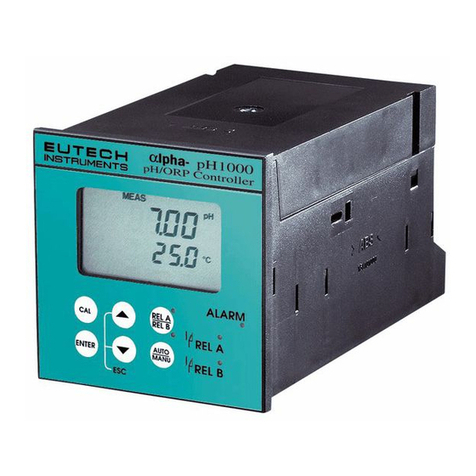
EUTECH INSTRUMENTS
EUTECH INSTRUMENTS ALPHA PH1000 PHORP CONTROLLERTRANSMITTER Instructions d'utilisation
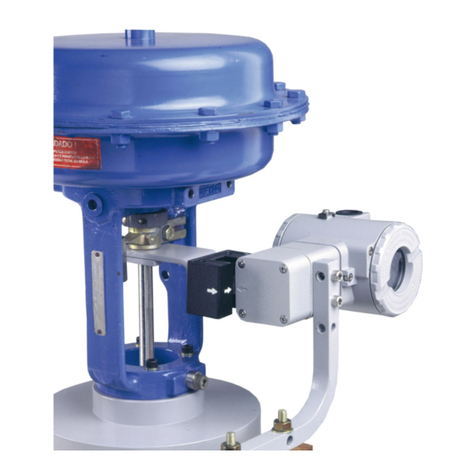
SMAR
SMAR TP301 Operation, maintenance and instructions manual

Stobag
Stobag SKIMY SRCH/WX Instructions for the fitter
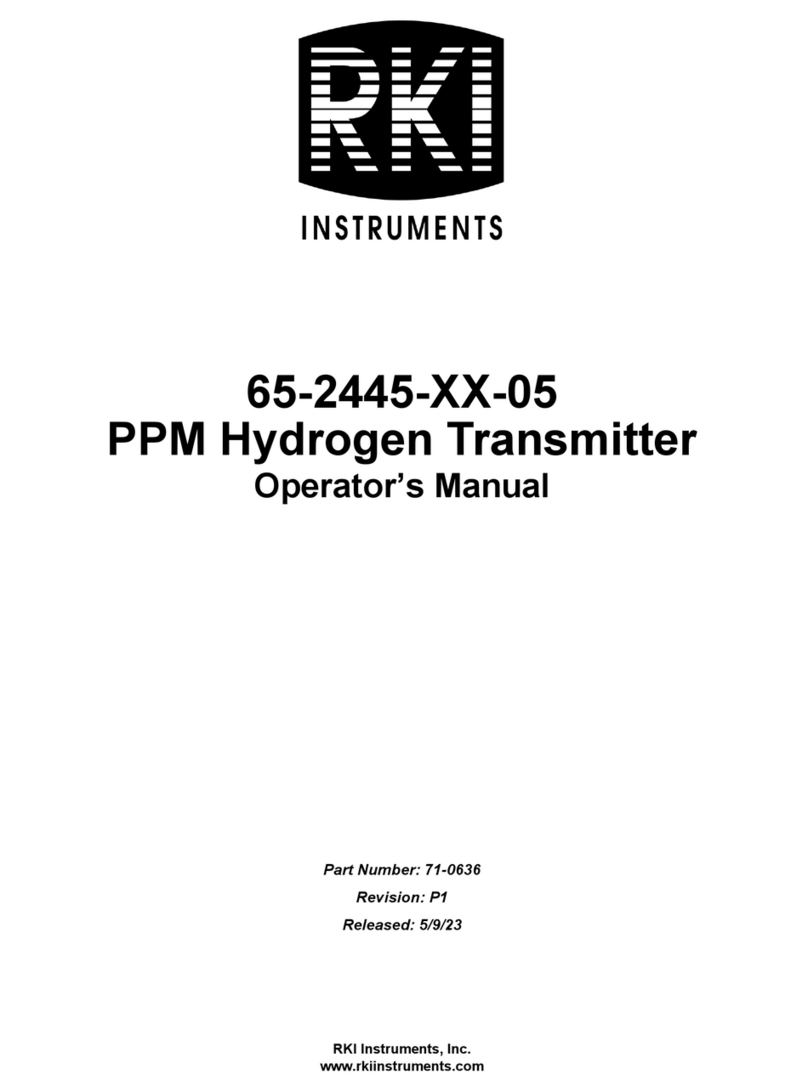
RKI Instruments
RKI Instruments 65-2445 05 Series Operator's manual
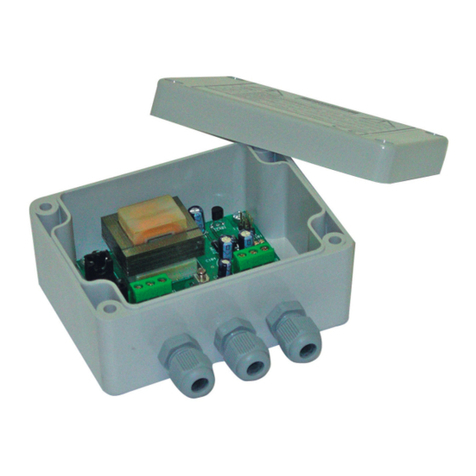
ASTEL
ASTEL TTP 101 operating instructions
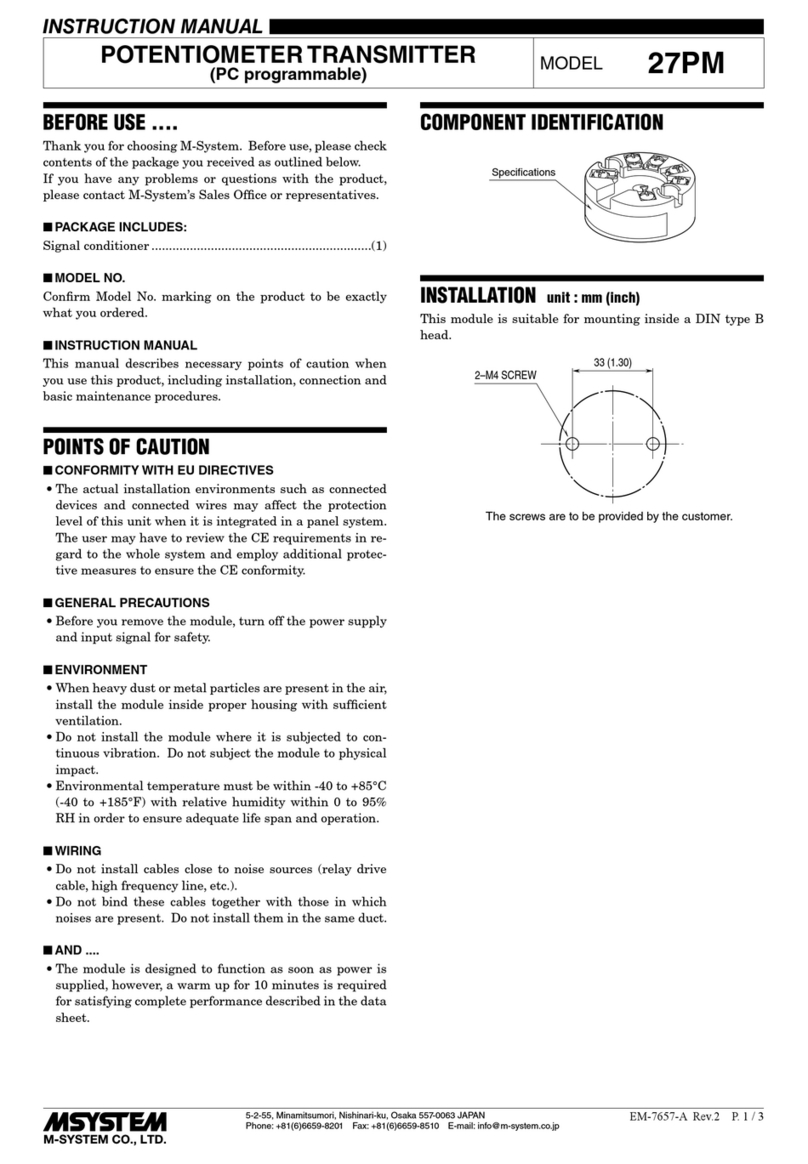
M-system
M-system 27PM instruction manual

